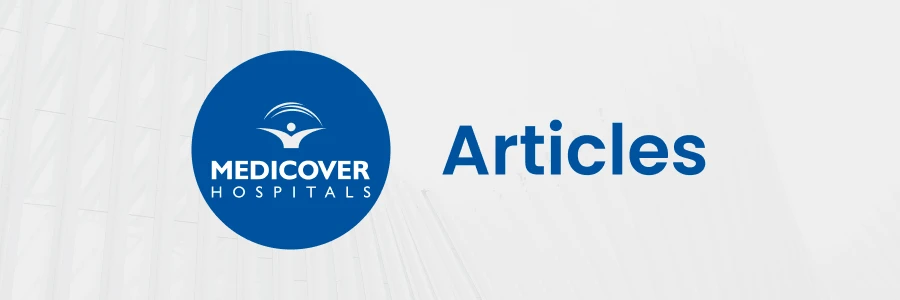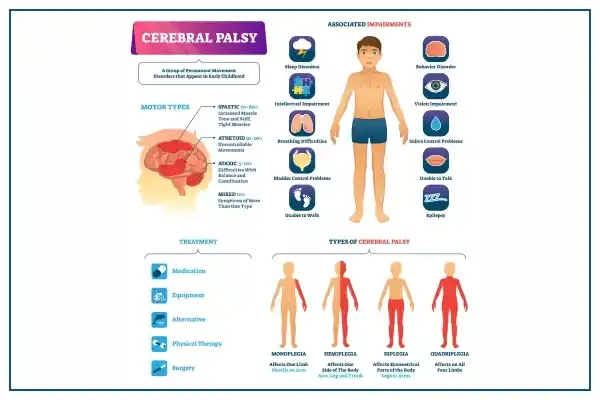Categories
- Cardiology 84
- Dermatology 45
- Endocrinology 33
- ENT 16
- Fertility 190
- Gastroenterology 78
- General-Medicine 81
- Gynecology 80
- Hematology 19
- Infectious-Diseases 33
- Neurology 52
- Oncology 34
- Ophthalmology 23
- Orthopedics 69
- Pediatrics 31
- Procedure 23
- Public-Health 144
- Pulmonology 59
- Radiology 8
- Urology 68
- Wellness 161
- Woman-and-child 77

What is Cerebral Palsy In Children?
Cerebral palsy is a neurological disorder seen in children which affect their ability to control their muscles and movements. Cerebral palsy is usually caused due to the damage which occurs to the child’s brain during its development. The brain damage can be caused by brain injury or abnormal development of the brain while it is still developing before birth, during birth or immediately after birth.
Causes of Cerebral Palsy
The cause of cerebral palsy cannot be known exactly. But since it is due to brain damage or a problem with the development in the parts of the brain which control the muscle movements, some of the reasons for brain damage that causes cerebral palsy are listed below:
- Premature birth of a child in which the brain isn’t fully developed.
- Exposure of mother to certain viruses during pregnancy.
- Improper development of a child’s brain during pregnancy.
- Lack of oxygen supply to the baby’s brain during delivery.
- A disruption of blood supply to the developing brain during pregnancy is referred to as a fetal stroke.
- Infant infections that lead to inflammation in or around the brain.
- A head injury to an infant or during the early years of childhood.

Symptoms of Cerebral Palsy
The signs and symptoms of cerebral palsy can vary greatly from child to child. The two main symptoms are a lack of motor skills (which is the ability to move in a coordinated and proper way) and neurological problems. Children with cerebral palsy can exhibit signs during their infancy or preschool years. The symptoms of cerebral palsy usually seen in many children may include:
- Lack of muscle coordination.
- Excessive drooling and difficulty in swallowing.
- Seizures
- Variations in muscle tone i.e. either too stiff or too floppy.
- Delays in reaching motor skills milestones and speech development.
- Difficulty with vision and hearing.
- Intellectual disabilities.
- Urinary incontinence
Every child with cerebral palsy is unique and has different disabilities related to neurological development and muscle coordination. One child may have total paralysis and require constant care, while the other has a partial disability. Cerebral palsy is considered a non-life-threatening condition as it will not improve or worse during its lifetime. But the associated conditions may worsen over time if left untreated.
Secure your health with a second opinion. Make informed decisions and book your appointment today!
Get A Second OpinionRisks and Complications
Certain infections or other health problems during pregnancy can significantly increase the risk of a baby getting cerebral palsy. Some of the factors associated with an increased risk of cerebral palsy are:
- During pregnancy, if the mother experiences certain contagious infections such as chickenpox, herpes, zika virus infection, the baby can develop cerebral palsy.
- Excessive drooling and difficulty in swallowing.
- Infants or newborns with jaundice and viral infections which cause inflammation in or around the brain are at higher risk to develop cerebral palsy.
- Different conditions during pregnancy such as multiple babies, low birth weight, premature birth, and complicated delivery can have an increased risk for cerebral palsy.
The associated disabilities with cerebral palsy will greatly contribute to a number of other complications during childhood or later during adulthood. Some of the complications may include:
- As children with cerebral palsy have difficulty in swallowing, it is difficult to meet the daily nutrition requirement which results in malnutrition.
- Eye muscle imbalance affects visual fixation and tracking.
- Abnormal alignment of joints from muscle may lead to osteoarthritis.
- Facing challenges of coping with disabilities may result in mental depression.
Diagnosis of Cerebral Palsy
Usually, doctors diagnose children with cerebral palsy by observing their disabilities. But they would recommend taking Brain scans such as MRI which helps to get the images of brain. If a child has seizures, the doctor may order an EEG to determine if he or she has epilepsy. Some additional tests are also done to identify other impairments and developmental delays.
Treatment of Cerebral Palsy
The disabilities caused by cerebral palsy are manageable and can be treated by certain therapies, surgeries, and medications to a great extent. Hence, the early detection and treatment of symptoms that represent cerebral palsy enhance the quality of life.
Ready to take control of your health journey? Book your appointment now and start your path towards wellness today!
Book an AppointmentFrequently Asked Questions
A baby's limbs have low muscle tone, resulting in heavy or floppy arms and legs. Stiffness in a baby's joints or muscles, or uncontrolled movement in the arms or legs Having difficulty coordinating body movements such as grasping and clapping. a delay in reaching developmental milestones such as rolling over, crawling, and walking
Delays in development such as rolling over, sitting, crawling, and walking. Muscle tone abnormal and unusual body posture.
CP is the most common motor disability in childhood. Cerebral refers to having something to do with the brain. Palsy refers to muscle weakness or difficulty using the muscles. CP is caused by abnormal brain development or brain damage that affects a person's ability to control his or her muscles.

Categories
- Cardiology 84
- Dermatology 45
- Endocrinology 33
- ENT 16
- Fertility 190
- Gastroenterology 78
- General-Medicine 81
- General 6
- Gynecology 80
- Hematology 19
- Infectious-Diseases 33
- Neurology 52
- Oncology 34
- Ophthalmology 23
- Orthopedics 69
- Pediatrics 31
- Procedure 23
- Public-Health 144
- Pulmonology 59
- Radiology 8
- Urology 68
- Wellness 161
- Woman-and-child 77